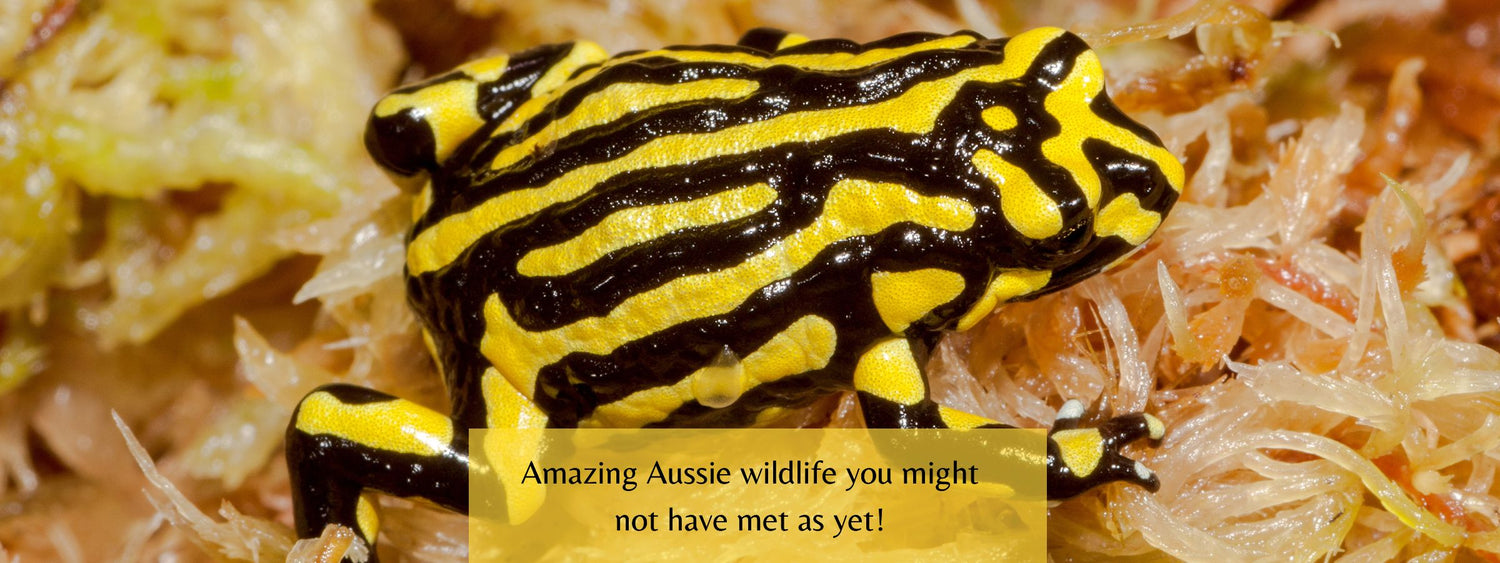
Suggested: Keep the info in this blog up your sleeve for your next trivia night! 😄
Back in 2020, researchers in the USA shone a 'black' (UV) light on some preserved platypus pelts in storage - not expecting any result - and surprisingly found out that they were glowing (like an 1980’s disco)! 😄
The story went around the world and very soon after, an Australian independent conservator in Tasmania, very carefully removed one hair and half a whisker from a very precious thylacine (Tasmanian Tiger) pelt. He used them to determine whether they would ‘glow in the dark’.
And amazingly they did!
Just in case it was just the museum’s storage somehow adding the fluorescence, a zoologist in Australia started testing road-kill animals to see if they would also glow.
And they did!
Wow – what a fantastic discovery this was. And it led to more research which has found quite a few of our other Australian native fauna do the same.
This type of bioluminescence is common in marine animals and insects. But, before 2020, wasn’t previously known to be present in mammals.
Keep reading to find out what has been discovered up to now…
Our cool and calm PLATYPUS
The platypus has many mysterious features, but it was only just a few years ago, that the researchers (see above) discovered that if you shine a ‘black’ light (ultra-violet) on their coats IN THE DARK - their coats become fluorescent. Their coats appear to be a bright shiny blue/green colour.
No one yet knows why this happens or if there is an ancient reason for them having this amazing ability!

It is possible that the platypus is actually matching the ultraviolet light that is more prevalent at dusk and dawn - and using using their fluorescence to help them hide from predators. Like they have a kind of invisibility cloak effect happening! 😊
But there are other theories too - and more research is ongoing to investigate further.
Meet the feisty TASSIE DEVIL
The Tasmanian devil has a different ‘take’ on bioluminescence. The skin around their snout, eyes and inner ears absorbs ultraviolet light and then it re-emits it as blue visible light. They sort of look like they have bright blue ‘war paint’ on their faces.
Again, it is not clear whether their biofluorescence serves any ecological purpose or whether it has come about accidentally.

The Tasmanian devil became the largest carnivorous marsupial in Australia when the thylacine (known as the Tasmanian tiger) became extinct in the 1930s.
The Tasmanian devil now only lives on Australia’s island state of Tasmania where it is endangered.
WOMBATS are also wandering through this story…
Wombats are new entrants to the bioluminescence party! Yes – they also glow in the dark. 😊
Their luminescence is closer to the type that the platypus has.

Like the others, the reason for them glowing is not yet known but more research is underway.
Wombats also have lots of interesting traits like 'square shaped' poos! But that's for another story later. 😄
The now extinct Thylacine isn’t missing out
Recent testing showed that the now extinct Tasmanian Tiger (Thylacine) was in the bioluminescence club too!

A microscopic examination of a rediscovered thylacine pelt has revealed that the animal's fur varied in coarseness, shape, and colour. And the pelt hair had at least three layers of body hair and eight different types of hair overall.
Some of the hair was hollow, which would have kept the Tasmanian Tiger warm over the cold winter months.
The one hair and half a whisker that were tested, clearly showed the luminescence when lit up by an ultraviolet light - which was an exciting discovery.
Here are 2 more interesting facts about our extinct thylacines:
- The pelt’s ‘chocolate’, ‘honey’ and ‘grey’ colours were found to be more dramatic - when the pelt was examined - than previously realised.
- Tasmanian tigers were well-adapted to the cold climate, with their EIGHT types of hair, including hollow hairs to trap heat!
BILBIES, QUOLLS and more are now jumping on the bandwagon!
I have seen a photo of a bilby ‘glowing’ in a pinkish/purplish shade, as well.
And another researcher mentioned that Quolls may also have the bioluminescence trait. They are currently following this up.
When researchers put various animals under a 'black' - that is a UV - light, they found that bilbies, bandicoots, wombats, flying foxes, microbats, and Tasmanian devils all took on a their own species glow. Amazing, eh?!



And echidna's quills glow a bright white under UV light!
Kangaroos, according to the researcher, were “rather disappointing” because they didn’t glow at all.
No one knows, at this time, what is the reason for the luminescence - that has previously been hidden - in many of our Australian mammals.
It could just be one of those ancestral traits that persists, but the reason for it existing is unknown. Or perhaps it’s a way to merge into the landscape at dusk and dawn for protection from predators.
When I see any updated research, I’ll definitely let you know via our socials. 😊
It’s fascinating stuff, isn’t it? Leave a comment if you think this is pretty cool!
What wonderful native animals we have in Australia – we’re so lucky. 💛
This blog will be here to re-visit, share and (I hope) inspire for the future.
Remember to bookmark it so you can come back to it at any time. 😊 Thanks.
And if you enjoyed this blog, please feel welcome to leave a comment to let others know about our blog.
*** Look for our new Twizzle Designs Recycling made easy Guide - it's free and full of info on how to recycle hard-to-move-on items. Click the link is on the front page of our online store. ***
Twizzle Designs offers truly eco-friendly, Australian made, sustainable gifts for your friends and family.
We also donate to 💚 Planting trees 💚 Supporting conservation of Australian native wildlife, and 💚 Helping to save our planet by donating to environmentally aware charities. Because it's super important to us. 😊





